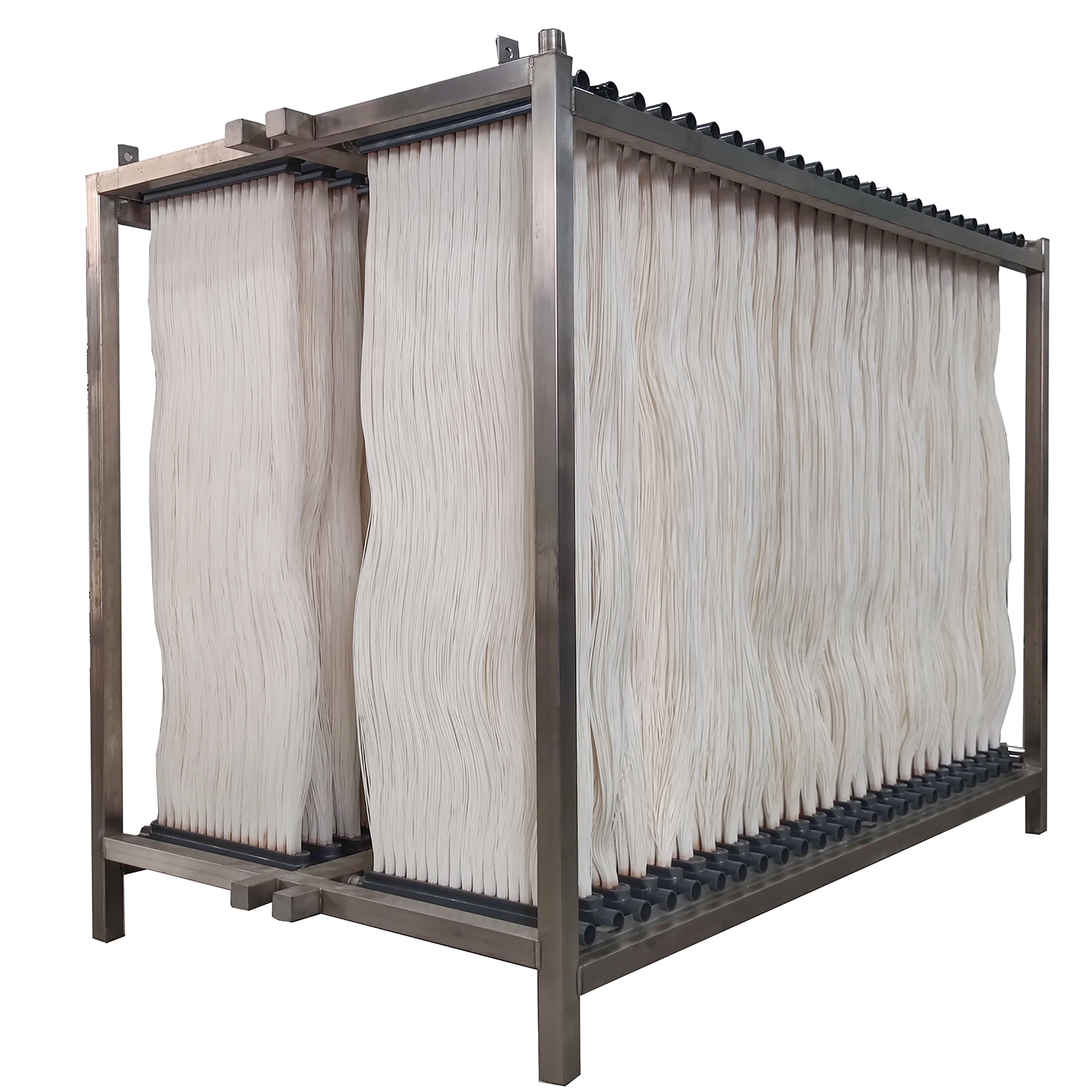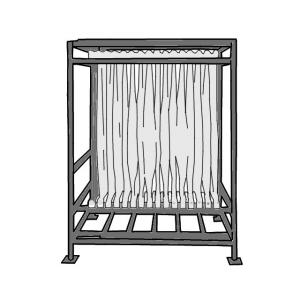Membrane Layer Bioreactors Explained: Effective Solutions for Clean Water
Membrane layer bioreactors (MBRs) have emerged as an innovative remedy for resolving the pushing obstacles of wastewater treatment - Membrane Bioreactor. By integrating biological processes with advanced membrane layer purification, MBRs not just enhance the top quality of treated water however also decrease the spatial needs of treatment facilities.

What Are Membrane Bioreactors?
Membrane bioreactors (MBRs) are innovative wastewater therapy systems that incorporate biological deterioration processes with membrane layer filtering innovation. This assimilation allows for the effective elimination of pollutants from water, making MBRs a preferred choice in various applications, including municipal wastewater therapy and industrial effluent management.

Among the critical benefits of MBRs is their ability to generate top quality effluent, often appropriate for reuse in irrigation or commercial processes. Furthermore, MBRs call for a smaller sized impact compared to conventional treatment systems, making them excellent for urban setups where room might be limited.
Furthermore, MBRs can successfully take care of varying influent lots and are much less vulnerable to the effects of poisonous shocks. These features add to their expanding popularity as a sustainable option for attending to the enhancing need for clean water while lessening ecological effects.
How Membrane Bioreactors Work
While the procedure of membrane layer bioreactors (MBRs) may seem complex, it fundamentally focuses on the synergy between organic processes and membrane filtering. MBRs integrate a biological therapy procedure, commonly activated sludge, with a membrane splitting up device to treat wastewater effectively.
In an MBR system, wastewater is initial presented into a bioreactor where microorganisms deteriorate natural issue and other contaminants. The organic activity reduces the focus of pollutants while advertising the development of biomass. Following this organic therapy, the blended alcohol goes through membrane filtration, which can be microfiltration or ultrafiltration, depending upon the wanted effluent top quality.
The membranes act as a physical obstacle, permitting water and tiny solutes to pass while retaining suspended solids and bigger molecules. This makes it possible for the system to preserve a high concentration of biomass within the reactor, enhancing the treatment efficiency.
Moreover, the continuous splitting up of cured water from the biomass promotes a small layout and decreases the footprint of the treatment center. On the whole, the mix of biological deterioration and membrane filtration in MBRs results in efficient and trustworthy wastewater therapy, making certain premium effluent ideal for different applications.
Benefits of MBR Innovation
One of the vital benefits of membrane layer bioreactor (MBR) modern technology is its ability to create premium effluent with a significantly reduced impact compared to traditional wastewater treatment methods. MBR systems effectively incorporate organic treatment and membrane layer filtration, leading to remarkable elimination of impurities, consisting of put on hold solids, virus, and organic matter. This capacity results in effluent that typically fulfills or goes beyond stringent regulatory standards for reuse and discharge.
Furthermore, MBR innovation permits greater biomass concentrations, which enhances the therapy efficiency and lowers the required activator volume. This small design is especially beneficial in city locations where space is limited. The operational flexibility of MBR systems also means they can adapt to varying influent top qualities and circulation rates, making them appropriate for a variety of applications.
In addition, the lowered sludge production related to MBR procedures adds to decrease operational and upkeep prices. The membranes act as a physical barrier, lessening the danger of clogging and making it my link possible for longer operational durations between cleansing. Generally, the advantages of MBR technology make it an attractive option for lasting wastewater treatment, attending to both environmental concerns and the demand for efficient source monitoring.
Applications of Membrane Layer Bioreactors
With their adaptability and effectiveness, membrane bioreactors (MBRs) find applications throughout different sectors, consisting of local wastewater treatment, industrial procedures, and even water recovery. In metropolitan settings, MBRs provide a small remedy for treating wastewater, successfully eliminating contaminants while concurrently creating premium effluent that fulfills stringent regulative criteria. This makes them specifically suitable for locations with minimal space.
In commercial applications, MBR technology is made use of for treating procedure water, specifically in markets such as food and beverage, drugs, and petrochemicals. These sectors gain from MBRs' ability to manage high natural lots and their effectiveness in recouping valuable sources from wastewater, such as nutrients and water.
Additionally, MBRs play a vital function in water improvement efforts, allowing the reuse of treated wastewater for irrigation, commercial processes, or perhaps as safe and clean water after additional therapy (Membrane Bioreactor). Their effectiveness in removing microorganisms and contaminants makes them a reputable selection for making certain water top quality in various reuse applications
Future of Water Treatment Solutions
The future of water treatment solutions is positioned for transformative innovations driven by technological advancement and boosting environmental recognition. As global water deficiency becomes a pressing problem, brand-new techniques, including membrane layer bioreactor (MBR) systems, are readied to play a crucial duty in boosting the effectiveness and sustainability of water therapy processes.
Arising modern technologies such as expert system and artificial intelligence are anticipated to maximize therapy procedures, enabling real-time surveillance and anticipating upkeep. This will certainly improve the general integrity and performance of water treatment centers. Furthermore, developments in membrane layer products, such as graphene and nanofiltration, promise to boost permeation rates and lower fouling, causing lower energy usage and functional prices.
Additionally, the assimilation of renewable energy resources into water therapy plants will add to greener practices. The round economic situation version will additionally acquire grip, motivating the healing of important sources from wastewater, such as nutrients and energy.
Verdict

Membrane bioreactors (MBRs) have arised as a sophisticated service for attending to the pushing difficulties of wastewater treatment. By integrating organic processes with advanced membrane layer filtration, MBRs not only improve the top quality of cured water yet likewise lower the spatial needs of treatment facilities.One of the crucial benefits of membrane bioreactor (MBR) innovation is its ability to produce premium effluent with a significantly decreased footprint contrasted to conventional wastewater treatment methods.With their convenience and performance, membrane bioreactors (MBRs) discover applications throughout different markets, including metropolitan wastewater therapy, industrial processes, and also water reclamation.In conclusion, membrane bioreactors represent a significant development in wastewater treatment technology, incorporating organic procedures with effective membrane purification to create high-quality effluent.
Comments on “Membrane Bioreactor Systems: A Key Technology for Water Reuse and Recycling”